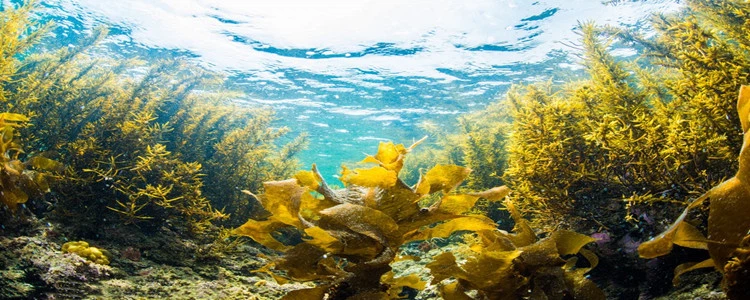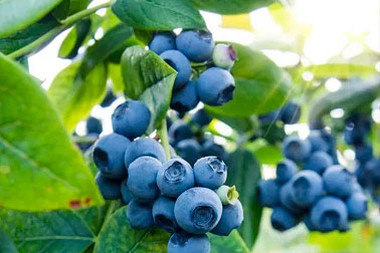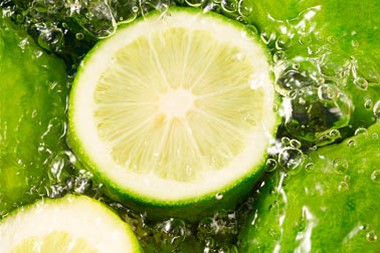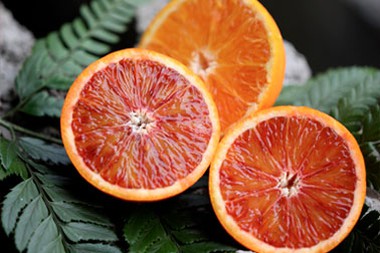What is Polysaccharide
Polysaccharides widely exist in organisms, which are a kind of natural macromolecular polymers connected by aldose or ketose through glycosidic bonds. They are important biological macromolecules in organisms and one of the basic substances to maintain the normal operation of life activities. Plant polysaccharide, also known as plant polysaccharide, is a kind of glycan with more than 10 polymerization degrees produced by plant cell metabolism.
It is composed of many same or different monosaccharides α One or β Monoglycoside bond compounds are widely found in natural plants, including starch, cellulose, polysaccharide, pectin, etc. Due to the wide source of plant polysaccharides, the molecular composition and molecular weight of different plant polysaccharides are different. Some plant polysaccharides, such as starch, cellulose, and pectin, have already become an important part of people's daily life.

Types of plant polysaccharides
There are many kinds of plant polysaccharides. According to their functions in plants, they can be divided into two categories: one is to form the supporting tissues of plants, such as cellulose; One is the storage nutrient of plants, which can be dissolved in hot water to form colloidal solution, and can be hydrolyzed by enzymes to generate monosaccharides to provide energy, such as starch. According to different plant organs, plant polysaccharides can be divided into plant flower and fruit fruit polysaccharides, such as pollen polysaccharide, corn silk polysaccharide, jujube polysaccharide, fig polysaccharide; Plant stem and leaf polysaccharides such as tea polysaccharides, aloe polysaccharides, mulberry leaves polysaccharides, longan polysaccharides; Polysaccharides from plant roots, such as konjac polysaccharide, yam polysaccharide, ophiopogon japonicus polysaccharide, etc.
According to their location in plant cells, plant polysaccharides can be divided into intracellular polysaccharides, cell wall polysaccharides and extracellular polysaccharides. Intracellular polysaccharides exist in vacuoles (except starch) in solution or high water and state, mainly including fructans and mannans; Cell wall polysaccharides mainly refer to cellulose, hemicellulose, pectin, etc; Extracellular polysaccharides mainly refer to resins and other gums, such as galactose, glucuronic acid, mannan, xylan and other polysaccharides
Extraction technology
Generally, the cell wall of plants is relatively firm, which requires special cell-breaking operations before extraction. The methods mainly include chemical treatment, swelling and self-swelling, biological enzyme degradation, and mechanical braking. Many plant seeds or animal samples contain more lipid substances, so ether, petroleum ether, and other solvents should be used to remove fat-soluble impurities before extraction. At present, the main extraction methods for plant polysaccharides are hot water extraction, alkali extraction, enzymolysis extraction, microwave-assisted extraction, and ultrasonic extraction.
1. Hot water extraction
Hot water extraction is a traditional method of extracting plant polysaccharides commonly used at home and abroad. The hot water extraction method adopts the water system. Its advantages are that the material is easy to obtain, the required conditions are simple, it is suitable for the extraction of free polysaccharides, and there are few interfering substances. However, the extraction process requires multiple extractions, the operation time is long, the yield is low, and it is time-consuming and material-consuming.
2. Alkali leaching
The principle of alkali extraction is to use alkali to destroy cell walls and to facilitate the extraction of acidic polysaccharides. Although alkali treatment increased the content of polysaccharides, the content of oligosaccharides was relatively reduced, and the liquid after extraction needed to be neutralized, so the procedure was cumbersome. In addition, the components of the extract obtained by alkali extraction are complex, the small molecule substances produced in the extraction process are not easy to remove, and it is also easy to hydrolyze some polysaccharides, destroy the active structure of polysaccharides, and reduce the yield of polysaccharides.
3. Enzymolysis extraction method
The enzymatic method is a combination of enzyme and hot water extraction. A certain amount of pectinase, cellulase, and neutral protease are used for the enzyme. The main methods are compound enzyme method, separate enzyme method, and single enzyme method. Enzymatic extraction of plant polysaccharides has many advantages, such as mild reaction conditions, high efficiency, easy removal of impurities, simple process, and time-saving, but the price of the enzyme is high and the conditions for use are relatively harsh.
4. Auxiliary extraction method
Microwave-assisted solid-liquid extraction is a new type of assisted extraction technology with great potential. In recent years, microwave technology has been applied to the extraction process of active ingredients of natural drugs abroad, which has effectively improved the yield of active ingredients and rapidly developed towards industrialization. At present, domestic microwave technology is involved in the extraction of polysaccharides, volatile oils, alkaloids, glycosides, terpenoids, organic acids, and flavonoids.
5. Ultrasonic extraction method
As a new extraction technology, ultrasound has the advantages of high efficiency, short time, reagent saving, simple steps, etc. It can reduce production costs and improve economic benefits. It can also prevent the degradation, fading, and other changes of the extract under long-term and high-temperature conditions.
Function of plant polysaccharides
Nowadays, the research of plant polysaccharides has been paid more and more attention. The international scientific community even put forward that the 21st century is the century of polysaccharides; Scientific experimental research shows that many plant polysaccharides have biological activities, including immune regulation, hypoglycemic, hypolipidemic, anti-radiation, anti-bacterial, anti-virus, liver protection and other health effects. Therefore, plant polysaccharides have already been widely used in medical, catering, and other areas of public life.
1. Regulate immune function
Many polysaccharides can significantly increase the phagocytic index of macrophages and stimulate the production of antibodies, thereby enhancing the immune function of the human body.
With the rapid development of modern medicine, cell biology, and molecular biology, people have a deeper understanding of the immune system. Immune system disorders will lead to human aging and many diseases. The immunoregulatory effect of polysaccharides is mainly achieved by activating macrophages, T and B lymphocytes, reticuloendothelial system, complementing and promoting the production of interferon and interleukin.
2. Delay aging
Flammulina velutipes polysaccharides, tremella polysaccharides, etc. can significantly reduce the content of lipofuscin in myocardial tissue of the body, increase the activity of SOD enzyme in brain and liver tissue, and thus play a role in delaying the aging of the body.
In the traditional Chinese medicine anti-aging prescription, the main ingredient is plant medicine, and the higher content is mostly sugar. Modern science has put forward the free radical theory of aging. Its basic points are: under normal conditions, the production and disappearance of free radicals in the body are in a dynamic equilibrium state, that is, free radicals are constantly produced and eliminated to maintain the normal metabolism of the body. However, when the body is aging, the amount of free radicals produced is relatively large, and the ability of the body to remove free radicals is reduced. Excess free radicals attack the body tissues, The function of the body is disordered and obstructed, and the symptoms of aging appear. Studies have shown that citrus polysaccharide can affect the activity of free radicals, and its activity is related to the amount of polysaccharides. Cistanche deserticola polysaccharide can delay skin aging.
3. Fatigue resistance
Some polysaccharides can reduce the activity of lactate dehydrogenase, significantly increase the content of liver glycogen, improve the exercise ability of the body, and make the body quickly return to normal after exercise, so they have the effect of anti-fatigue.
4. Reduce blood sugar
Some plant-active polysaccharides have hypoglycemic and hypolipidemic effects. Under normal circumstances, the synthesis and decomposition of lipids in the human body maintain a dynamic balance. Once the balance is destroyed, the increase of blood lipid content will damage the arterial intima and cause atherosclerosis, thus inducing cardiovascular and cerebrovascular diseases. Reducing blood lipid content is of great significance for the prevention and treatment of cardiovascular diseases. It is reported that pumpkin polysaccharide can reduce blood sugar and blood lipids, and its prevention and treatment effect on diabetes has been confirmed.
5. Radiation resistance
In real life, with the modernization of science and technology and people's lives, electronic and electrical appliances are becoming more and more popular. More and more people are exposed to radiation, especially the radiation damage of tumor patients receiving radiotherapy, and occupational radiation-exposed personnel are increasingly valued. In fact, polysaccharides from plants, animals, or microorganisms have certain anti-radiation effects. The mechanism is generally that polysaccharides can improve the body's tolerance to radiation by strengthening the hematopoietic system and activating phagocytes.
6. Antibacterial and antiviral
Many studies have shown that many polysaccharides have inhibitory effects on bacteria and viruses, such as HIV, herpes simplex virus, influenza virus, cystic gastritis virus, etc. The experimental results showed that Ginkgo biloba exopolysaccharides and Ginkgo biloba polysaccharides could significantly inhibit the ear swelling and capillary permeability increase induced by inflammatory agents in mice, indicating that they had anti-inflammatory effects; Purple polysaccharides can not only inhibit gram-positive bacteria such as Staphylococcus aureus, but also inhibit gram-negative bacteria such as Sarcina canescens. large
7. Liver protection
Some studies have shown that the crude polysaccharide of Schisandra chinensis can protect the liver and reduce liver injury in mice; Lycium barbarum polysaccharide can reduce the content of malondialdehyde in liver tissue. Both of these polysaccharides can increase the content of liver glycogen, thus improving the energy reserve of the body and helping to resist the damage of harmful substances to the liver.



